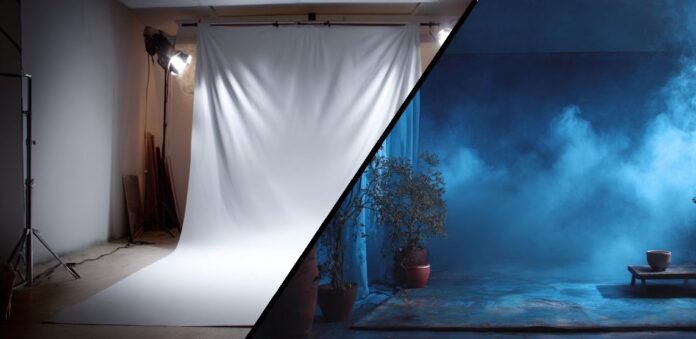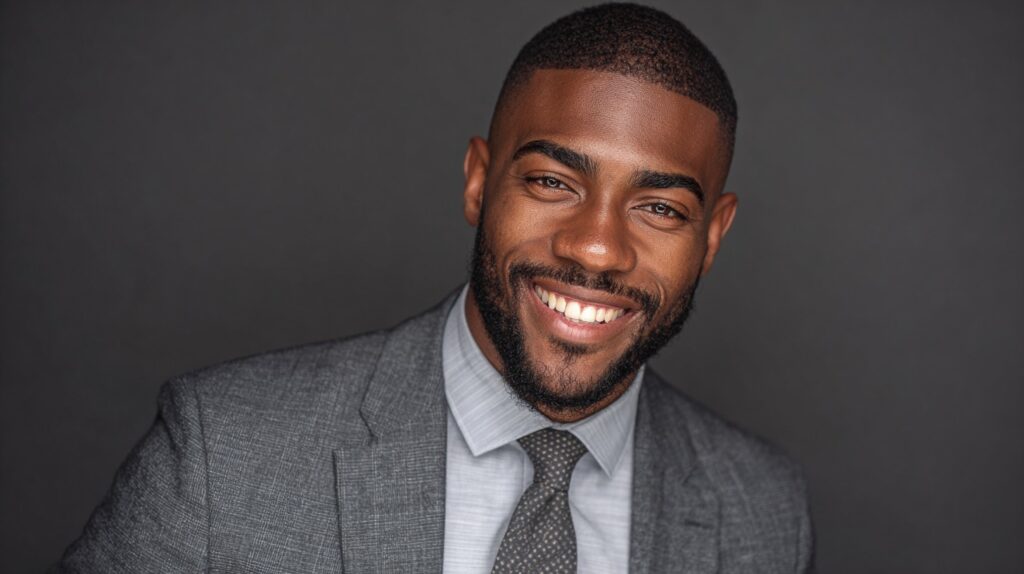
Visual presentation plays a powerful role in how employers evaluate CVs in today’s highly competitive job market. Recruiters often make rapid decisions, sometimes within seconds, about whether to continue reviewing an application.
A professional photograph, when used in the right context, can help project confidence, credibility, and attention to detail.
In certain regions and industries, an CV image is viewed as an essential part of a candidate’s profile, while in others it may even work against the applicant.
Cultural awareness becomes crucial because hiring practices vary significantly. Some countries see photographs as standard, while others discourage them entirely due to bias concerns. This is especially important to know when communicating with employers or potential clients from other countries aiming at expanding the global reach of your business.
A well-prepared photo, paired with the right backdrop, elevates presentation and ensures the focus remains on qualifications without distraction no matter if you are applying for a job or you want to start your own business.
When a photo is required or encouraged, matching the image with a professional background becomes just as important as the CV text itself.
The Psychology of Background Colors in CV Photos

Color carries psychological weight, and choosing the right one influences how hiring managers perceive a candidate. Each option has its own strengths, making some better suited for certain industries.
White Background
A white backdrop reflects clarity, neutrality, and professionalism.
Its clean look ensures strong contrast, keeping focus on facial features.
This choice aligns best with conservative and traditional roles.
Key benefits of white include:
- Works seamlessly for government, banking, and administrative positions.
- Offers excellent visibility across both digital and printed formats.
- Maintains a timeless professional look suitable for formal industries.
Blue Background
Blue creates an impression of trust, calmness, and reliability.
Its association with authority and professionalism makes it especially effective for leadership or finance-focused careers.
Considerations when using blue:
- Medium to dark shades convey confidence without distraction.
- Ideal for sales, finance, consulting, and client-facing roles.
- Avoid bold or saturated hues, which may appear unprofessional.
Neutral Backgrounds (Grey, Beige, Light Pastel)
Neutral tones balance professionalism with modern polish. They remain understated, keeping focus on the subject while subtly enhancing the CV image. Many career coaches recommend them as a safe yet stylish option.
Advantages of neutral tones include:
- Suitable for education, healthcare, and supportive professions.
- Grey adds authority without heaviness.
- Beige and light pastels soften the photo, projecting accessibility.
Professional setups like gravity backdrops for photography ensure consistency and high-quality presentation.
Should You Include a Photo on Your CV?
Adding a photo is not a universal practice, so candidates need to consider both location and field before deciding. In some countries, omitting a photo could look unusual, while in others it might raise concerns about discrimination or unconscious bias.
Regional expectations highlight the differences:
- Common practice in many parts of Europe and Asia, where employers often expect headshots.
- Discouraged in the United States, United Kingdom, and Ireland, where strict anti-discrimination laws encourage photo-free CVs.
Industry standards are just as important as geography. In certain roles, appearance and personal branding matter greatly, while in others, performance history and expertise carry more weight.
Examples include:
- Expected in creative fields such as design, teaching, acting, hospitality, or modeling, where a professional image reinforces brand identity.
- Avoided in technical or formal professions such as law, IT, finance, or research, where the focus remains on skills, certifications, and measurable results.
A candidate should evaluate both cultural norms and the expectations of their specific profession before attaching a photo. Doing so ensures the CV works to their advantage rather than detracting from it.
Why Background Color Matters in a CV Photo
Background selection plays a critical role in projecting professionalism.
A simple change in backdrop can shift how employers interpret the candidate’s demeanor, confidence, and reliability.
Color psychology influences first impressions, even when the viewer may not consciously register it. Pair that with the right outfit for the photo and you will definitely leave a great first impression.
Key reasons background choice matters include:
- It directs focus to the face without distractions.
- It shapes emotional perception of trustworthiness, calmness, or authority.
- It helps maintain clarity in both printed and digital formats.
- It ensures compatibility with applicant tracking systems and digital scans.
A clean and balanced background signals professionalism, while cluttered or distracting colors weaken the impact.
Candidates aiming to present themselves as polished and approachable should treat the backdrop as an extension of their professional image.
What to Avoid in CV Image Backgrounds
Poor background choices risk undermining a candidate’s credibility in an instant. Instead of strengthening professionalism, a poorly chosen backdrop can draw unwanted attention, create visual noise, and even signal a lack of preparation.
Employers may subconsciously associate certain background styles with carelessness, which can negatively influence how the entire CV is received.
A background should support the subject, never compete with it.
Colors and patterns that distract the viewer reduce the photo’s impact.
Neon shades often create an overly casual or unrefined tone, making them inappropriate for professional documents.
Likewise, cluttered rooms or casual environments behind the subject can make the candidate appear less polished, suggesting a lack of attention to detail.
Excessive contrast is another issue, as harsh lighting or mismatched tones can strain the eyes and leave the CV image looking awkward rather than clean.
Common mistakes to avoid include:
- Bright neon colors such as yellow, red, or green, which appear distracting and unprofessional.
- Busy patterns, gradients, or textured backgrounds that pull attention away from the subject’s face.
- Excessive contrast between clothing and backdrop, making the photo difficult to view comfortably.
- Dark tones combined with dark clothing, which create blending issues and reduce facial visibility.
Simple, light, and professional backdrops remain the safest option for most candidates.
They allow the subject’s expression and posture to take center stage while maintaining a polished and clear look.
A carefully selected neutral or soft-toned background helps ensure the image communicates professionalism without distraction, supporting the CV as a whole.
Summary
A well-chosen CV image contributes positively to an applicant’s professional presentation, but it must be intentional.
Safe options include white or light neutrals, which deliver clarity and versatility across industries.
Blue works well for candidates wishing to convey trust, calmness, or authority.
Neutral shades like grey and beige provide subtle sophistication suitable for healthcare, education, and service-related roles.
A backdrop should always support the candidate’s profile, not overshadow it.
When paired thoughtfully with professional attire and confident posture, the right background enhances credibility and helps create a strong first impression.




















